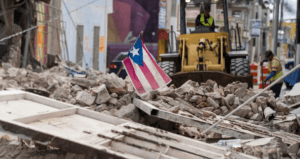As we prepare to cheer on our teams in the 2022 World Cup, it is essential to remember what it took to make this incredible event a reality. Between LGBTQ+ concerns, human rights violations, allegations of corruption, and environmental disasters, the 2022 Qatar World Cup will be nothing if not controversial.
Many non-governmental organizations (NGOs) have tried to alert the public on social and environmental issues to make this event possible in a desertic country.
Environmental concerns
The 2022 World Cup should be the first carbon-neutral event in the championship’s history, as promised by the organizers. The stadium temperature should be a comfortable 23 degrees Celsius while the outside temperature exceeds 40 degrees, and 90% of the materials used for construction should come from recycled sources.
Numerous efforts are aimed at that goal, such as installing solar-powered air conditioning, an electric metro system, and eliminating the need for internal flights to attend various events. Additionally, organizers plan to use carbon credits and plant thousands of trees to offset emissions.
However, a Carbon Market Watch’s complaint calculated that the carbon emissions generated by the new stadiums could be up to eight times higher than the numbers found in Qatar’s assessment.
Indeed, many scientists have demonstrated that using renewable energy systems will not make up for the environmental cost of a stadium being air-conditioned for two months. Solar power does not appear to be the best solution, according to Mohammed Ayoub, senior research director at the Qatar Environment and Energy Research Institute “Solar cells are facing challenges related to high temperatures, which reduce efficiency and cause the accumulation of dust.” Moreover, engineering professor Saud Abdul Ghani, the man behind the stadium cooling systems, confirmed that these installations would use a “good amount of energy,” and in case a power cut occurred, they would rely on polluting diesel generators.
Working conditions
At the same time, reports and testimonials assisted us in obtaining clarity on the labor force’s living and working conditions.
Let us retrace the steps of a worker to this event. It should be noted that those workers are trapped in the Kalafat system, which is a guardianship system in the entire Middle East region. Workers are “supervised” by their employers and are not permitted to leave or change jobs without permission. So, even if they are living in unappalling conditions, there is nothing they can do to escape them.
On arrival, their passports are confiscated to prevent them from escaping. The workers are then transported to labor camps near the desert, where they sleep in small cabins with up to six people per room, with no privacy. They work 12 hours a day, seven days a week, in the summer heat of Qatar. The working hours are primarily night shifts due to the heat, but it still reaches 30°C.
The heat might very well contribute to serious health problems, resulting in death. Amnesty International published a report in 2021 stating that 70% of migrant workers’ deaths due to working conditions are “unexplained.” Heart failure and respiratory failure are common causes of natural death found on death certificates, possibly due to the body malfunctioning after being in those settings. The Qatari government did not investigate those deaths, and families have been left without explanations or compensation.
Furthermore, even though Qatar is one of the wealthiest countries in the world per capita, workers for the international event are paid the equivalent of 1.3 euros per hour, which is the minimum wage in the country. According to testimonies, wages are frequently late and, in some cases, not paid at all.
Migrant workers travel there in the hope of earning money to send back to their impoverished families, only to find themselves separated from them, exploited, and abused. The only thing keeping them going is the prospect of one day being able to see their families again. “God knows there are days when I cannot continue, everything becomes too much… The only thing that keeps me alive is the thought of my children.” Sakib, a gardener from Bangladesh, declared in an interview with Amnesty International.
This raises the question: what did FIFA think when they chose Qatar as the location? And do they truly understand the cost of that decision? When the labor conditions were revealed, they attempted to regulate the construction. However, the new rules were implemented too late to prevent such a tragedy. We cannot blame FIFA for the Qatari government’s policies. Still, we can blame them for failing to conduct adequate research into the difficulties of hosting such an event in Qatar and hope they do not repeat the same mistake.
As for now, the announcement that the 2027 Asian Olympic Winter Games will be held in Saudi Arabia is another cause for concern.
The World Cup intends to bring people together and demonstrate the values of sport, such as equity, equality, inclusion, and respect. This competition has gradually devolved into a human and environmental disaster, incompatible with football’s principles.
Featured cover image: 25 March 2021: The German team ahead of their World Cup qualifier against Iceland in Duisburg, Germany. (Photograph by Tobias Schwarz – Pool/ Getty Images)






